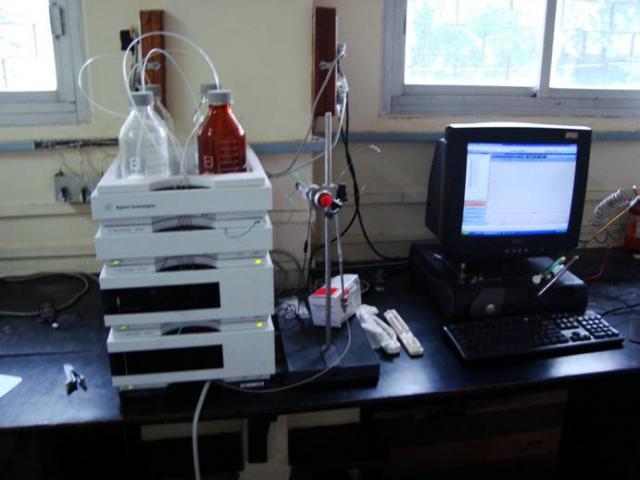High Performance Liquid Chromatography HPLC is a Kind of Column chromatography that pushes a sample mix or analyze in a solvent called the mobile phase at high pressure through a column with chromatographic packing material stationary phase. The sample is carried by a moving carrier gas flow of helium or nitrogen. HPLC has the capacity to separate, and identify substances that are found in any sample which could be dissolved in a liquid in trace concentrations as low as parts per trillion. As a result of this versatility, HPLC is used in many different industrial and scientific applications, such as pharmaceutical, environmental, forensics, and compounds. Sample Retention time will vary based upon the interaction between the stationary phase, the molecules being examined, and the solvent, or solvents used. Analyses having the least amount of interaction with the stationary phase or the maximum amount of interaction with the mobile phase will depart the column faster.

- Instrumentation
Main elements in an HPLC system comprise the solvent reservoir, or several reservoirs, a high-pressure hose, a column, injector system and the sensor. The reservoir holds the solvent, which can be known as the mobile phase since it moves. There are normally a minimum of two reservoirs in a system, with each holding up to 1000 cc of solvent and generally fitted with a gas diffuser through which helium could be bubbled. A pump is used to create a predetermined flow of the mobile phase. Although manual injection of samples remains possible, most HPLCs are now fully automated and controlled by computer. The injector, or auto sampler, introduces the solvent into a stage stream that carries the sample to the high pressure up to 400 bar column, which contains specific packing material required to effect separation. The packing material is known as the phase since it is held in place from the column hardware.
- High Performance Liquid Chromatography uHPLC
what is hplc Where standard HPLC typically utilizes column particles with sizes from 3 to 5µm and pressures of around 400 bar, uHPLC use designed columns with particles down to 1.7µm in proportion, at pressures in excess of 1000 bar. The principal benefit of an uHPLC is rate. These systems are faster, more sensitive, and rely on smaller quantities of organic solvents than standard HPLC, leading to the ability to conduct more samples in less time. But if the systems are conducted at average pressures greater than 800 pub, the columns era, or degrade faster. Newer technology has been developed for uHPLC units to utilize column particles with 1µm size, and pressure ranges around 6,800 bar.
